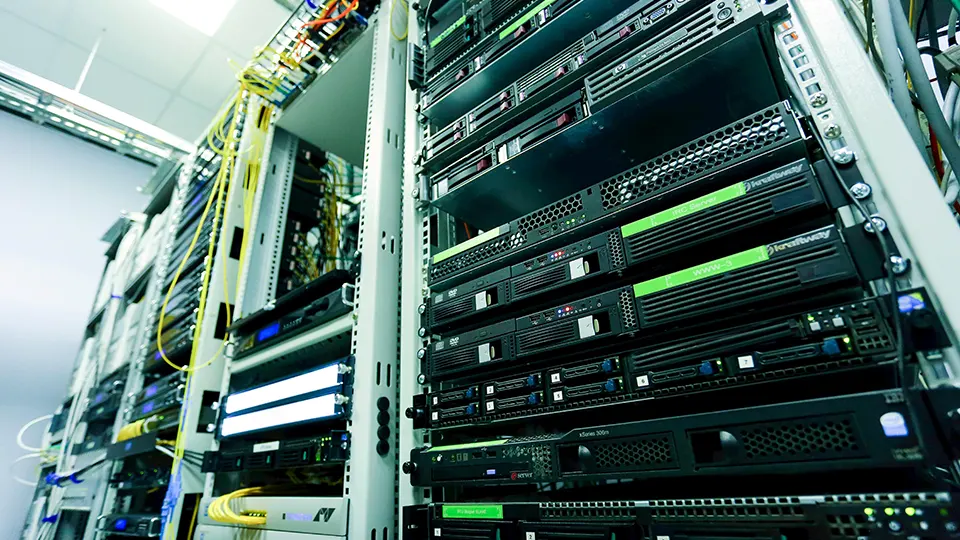How to Keep Your Server from Crashing: 7 Easy Steps
Server crashes can be a nightmare for any business, leading to downtime, data loss, and potentially significant financial and reputational damage. In today’s digital age, ensuring the reliability and stability of your server infrastructure is paramount. This article outlines seven critical steps to prevent server crashes, safeguarding your digital assets and ensuring uninterrupted service for your clients. Plus, don’t miss our bonus tip for an added layer of protection against unexpected server issues.
Table of Contents
- 1. Regularly Update and Patch Your Server
- 2. Monitor Server Performance and Health
- 3. Implement Robust Security Measures
- 4. Optimize Server Configuration
- 5. Manage Server Workload
- 6. Ensure Adequate Cooling and Power Supply
- 7. Conduct Regular Backups and Disaster Recovery Planning
- Bonus Tip: Use Virtualization for Easier Management and Recovery
- FAQs
1. Regularly Update and Patch Your Server
Keeping your server’s operating system and software up to date is crucial in preventing crashes. Updates often include patches for security vulnerabilities and fixes for bugs that could cause instability.
How to do it: Enable automatic updates if possible, or set a regular schedule to manually check for and apply updates. Pay special attention to security patches, which should be applied as soon as they are released.
2. Monitor Server Performance and Health
Continuous monitoring of your server’s performance can help you identify and address potential issues before they lead to a crash. Look for signs of overutilization, such as high CPU usage, memory leaks, or disk space shortages.
How to do it: Utilize server monitoring tools that can alert you to performance issues in real-time. Many tools offer dashboards that provide an overview of server health and performance metrics.
3. Implement Robust Security Measures
Cyberattacks can overload your server or exploit vulnerabilities to cause crashes. Implementing strong security measures is essential to protect your server from such threats.
How to do it: Install a reputable firewall and antivirus software. Regularly scan your server for malware and ensure that all security software is kept up to date. Additionally, use strong, unique passwords and consider implementing multi-factor authentication for server access.
4. Optimize Server Configuration
Improper server configuration can lead to inefficiencies and increased risk of crashes. Optimizing your server’s configuration for its specific role and workload can enhance stability and performance.
How to do it: Review and adjust settings such as memory allocation, process limits, and network configurations based on the server’s purpose and the applications it runs. Consult documentation and best practices for guidance on optimal configurations.
5. Manage Server Workload
Overloading your server with too many tasks or too much traffic can cause performance issues and crashes. Managing the workload effectively is key to maintaining server stability.
How to do it: Implement load balancing to distribute traffic evenly across multiple servers. Consider scaling your resources up or out during peak times to handle increased loads without overburdening a single server.
6. Ensure Adequate Cooling and Power Supply
Physical factors like overheating and power supply issues can also lead to server crashes. Ensuring your server environment is properly cooled and powered is essential.
How to do it: Keep your server room at an appropriate temperature with adequate ventilation or cooling systems. Use uninterruptible power supplies (UPS) to protect against power surges and outages.
7. Conduct Regular Backups and Disaster Recovery Planning
Even with all precautions, crashes can still occur. Regular backups and a solid disaster recovery plan ensure that you can quickly restore service and data in the event of a crash.
How to do it: Implement a regular backup schedule, storing backups in a secure, off-site location. Develop a disaster recovery plan that outlines steps to restore service and data, and regularly test this plan to ensure its effectiveness.
Bonus Tip: Use Virtualization for Easier Management and Recovery
Virtualizing your server environment can simplify management and enhance your ability to recover from crashes. Virtual machines can be easily moved, replicated, and restored, providing flexibility in managing server workloads and recovery efforts.
How to do it: Consider converting physical servers to virtual machines using virtualization software. Implement management tools that allow for easy monitoring, backup, and restoration of virtual servers.
FAQs
Q: How often should I update my server?
A: Apply security patches as soon as they are available. For other updates, a monthly schedule is a good practice, though this may vary based on the criticality of the updates and your specific environment.
Q: What is the best way to monitor server performance?
A: Use comprehensive server monitoring tools that can track a wide range of performance metrics and alert you to potential issues. Look for tools that offer customizable alerts and reporting features.
Q: Can too many security measures slow down my server?
A: While it’s important to secure your server, overly aggressive security settings or scanning can impact performance. Balance security and performance by configuring settings appropriately and scheduling scans during off-peak hours.
Q: How do I know if my server is overheating?
A: Most modern servers and monitoring tools include temperature sensors that can alert you if the server is overheating. Keep an eye on these alerts and ensure your cooling systems are adequate for your server environment.
By following these seven preventative steps, along with our bonus tip, you can significantly reduce the risk of server crashes, ensuring your business operations run smoothly and reliably. Remember, proactive server management and maintenance are key to preventing downtime and protecting your digital assets.
If you are looking to learn more about how to improve reliability of your key systems, check out our Managed Infrastructure services or our Cloud Resources services.
Want to get started leveraging IT to protect and grow your business? Schedule a Clarity Call now.
FURTHER READING

